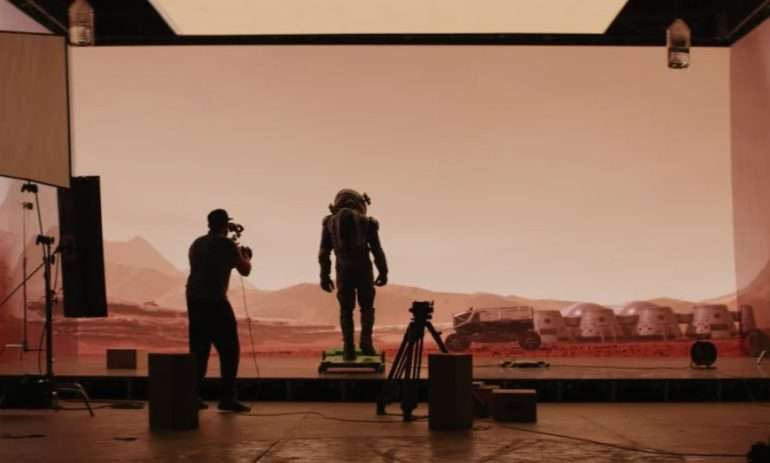The Canon EOS R has indeed gained a new sibling, one meticulously crafted for a very specific and fascinating purpose: capturing the breathtaking beauty of the night sky. Meet the Canon EOS Ra, a full-frame mirrorless camera engineered to excel in astrophotography. This specialized camera builds upon the foundation of the EOS R, but with a crucial modification that significantly enhances its ability to record the deep reds emitted by hydrogen-alpha (Hα) emission nebulae. The EOS Ra promises to unlock new dimensions of astrophotography for both seasoned astronomers and adventurous beginners.
What Sets the EOS Ra Apart?
The key difference between the Canon EOS R and the EOS Ra lies in its infrared (IR) cut filter. In the EOS Ra, this filter has been modified to allow approximately four times more hydrogen-alpha light to reach the sensor. This seemingly small adjustment makes a monumental difference when imaging deep-sky objects like the Rosette Nebula or the California Nebula, which are rich in Hα emissions. Without this modification, these nebulae would appear significantly fainter and less vibrant.
Why is Hydrogen-Alpha Light Important?
Hydrogen-alpha light, with a wavelength of 656.28 nanometers, is emitted by ionized hydrogen gas. Many of the most visually stunning nebulae in the night sky glow predominantly in this wavelength. Capturing this light effectively is essential for revealing the intricate details and vibrant colors of these celestial wonders.
Key Features of the Canon EOS Ra
Beyond the modified IR cut filter, the EOS Ra retains many of the features that made the EOS R a popular choice among photographers:
- 30.3 Megapixel Full-Frame Sensor: Delivers exceptional image quality and dynamic range.
- Dual Pixel CMOS AF: Provides fast and accurate autofocus, even in low light.
- 4K Video Recording: Capture stunning videos of the night sky.
- Vari-Angle Touchscreen LCD: Allows for easy composition and control from various angles.
- RF Lens Mount: Compatible with Canon’s innovative RF lenses, designed for superior optical performance.
Comparing the Canon EOS R and EOS Ra
| Feature | Canon EOS R | Canon EOS Ra |
|---|---|---|
| IR Cut Filter | Standard | Modified for 4x Hα Transmission |
| Intended Use | General Photography | Astrophotography |
| Price | Lower | Higher (due to specialization) |
The Canon EOS Ra is not simply a rebranded EOS R; it’s a specialized tool designed to excel in a specific and demanding field. While the EOS R remains a versatile camera for general photography, the EOS Ra offers astrophotographers a significant advantage in capturing the beauty of deep-sky objects. This careful engineering means capturing the cosmos becomes an even more immersive and rewarding experience. The unique capabilities open up entirely new avenues for celestial exploration, transforming ordinary nights into extraordinary astronomical adventures, revealing the universe’s hidden artistry with unprecedented clarity.
But the EOS Ra is more than just a sum of its technical parts; it’s an invitation. An invitation to step beyond the familiar landscapes of terrestrial photography and embark on a cosmic journey. Imagine yourself under a tapestry of stars, the hum of the Earth a low, comforting drone as you meticulously frame your shot; The chill of the night air bites at your cheeks, but the anticipation of capturing a nebula millions of light-years away warms you from the inside out. This is the allure of astrophotography, and the EOS Ra is your key to unlocking its secrets.
Beyond the Technical: The Art of Celestial Storytelling
Astrophotography isn’t just about capturing pretty pictures; it’s about telling stories written in light across vast cosmic canvases. Each photograph is a testament to the dedication and patience required to overcome the challenges of capturing faint light over extended periods.
The Challenges and the Rewards
- Light Pollution: Battling the encroaching glow of city lights requires strategic planning and potentially traveling to remote dark sky locations.
- Tracking the Stars: The Earth’s rotation demands precision tracking mounts to compensate for the movement of celestial objects.
- Calibration Frames: Mastering the art of capturing bias, dark, and flat frames is crucial for minimizing noise and imperfections in the final image.
But the rewards are immeasurable. The sheer awe of revealing hidden details in nebulae, galaxies, and star clusters is an experience unlike any other. It’s a connection to the universe on a deeply personal level.
The EOS Ra: A Portal to New Perspectives
The Canon EOS Ra opens a portal, not just to distant nebulae, but to new perspectives on our place in the cosmos. It’s a reminder that we are all connected, stardust dancing in the light of ancient suns. So, grab your EOS Ra, find a dark sky, and prepare to be amazed. The universe is waiting to be discovered, one pixel at a time. And with the Canon EOS Ra, the possibilities are truly limitless. This camera is a promise of countless nights spent under the stars, chasing photons and capturing the fleeting beauty of the cosmos.




